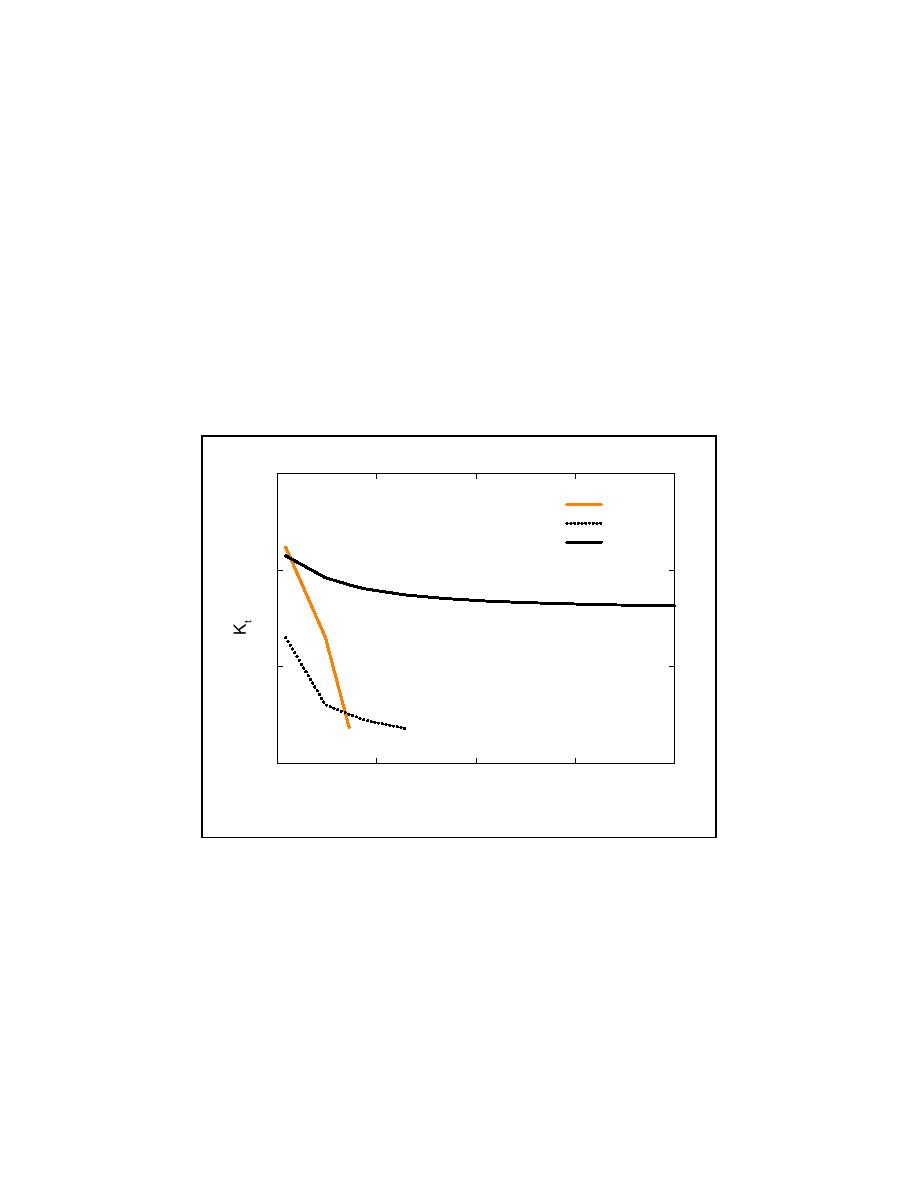
ERDC/CHL CHETN-II-45
March 2002
and Hall (1998) derived a formula that appears to capture transmission processes associated with
submerged structures. Their work specifically concerned submerged structures and should not
be transferred to surface-piercing structures. d'Angremond, van der Meer, and De Jong (1996)
produced an equation that can be applied to rubble mounds and solid structures, and it appears to
work well for structures with relative submergence between about -0.75 and 0.5. For deeply
submerged and relatively high structures, the d'Angremond formulation is not recommended.
Both the Seabrook and Hall and d'Angremond formulations were developed primarily with
conventional structure data and, therefore, care should be taken in applying them to reef
structures. The most promising work from a general predictive equation prospective appears to
be the Ahrens (2001) dominant-mode approach. The Ahrens equation was the only one to render
an S-curve in plotting Kt versus R/Ho and to give reasonable results for high structures. Also, the
Ahrens equation does not impose applicability limits. The Ahrens equation, however, was
developed based primarily upon reef breakwater data and may overpredict transmission for a
conventional structure. Additionally, the Ahrens equation for submerged structures may not
adequately account for the influence of relative crest width.
0.6
vdMc
dA
A
0.4
0.2
R/Ho=0.2
0.0
0.00
0.25
0.50
0.75
1.00
B/Lo
Figure 5. Transmission coefficient versus relative crest width
of surface-piercing structure
IMPLEMENTATION IN GENESIS: In GENESIS, wave transformation from deep water to
the location of the structure may be calculated by selecting either an external 2-D wave
transformation model, e.g., STWAVE (Smith, Resio, and Zendel 1999), or the internal wave
module within GENESIS (Hanson and Kraus 1989). In the revised GENESIS, the user may
choose either a constant value of Kt for each structure or allow the model to calculate appropriate
values based on time-varying water level and wave height, and structure characteristics. If the
variable-Kt option is selected, water level is read from an input file at a specified input time
interval. For each structure, the user specifies geometric properties (crest height and width,
6



 Previous Page
Previous Page
